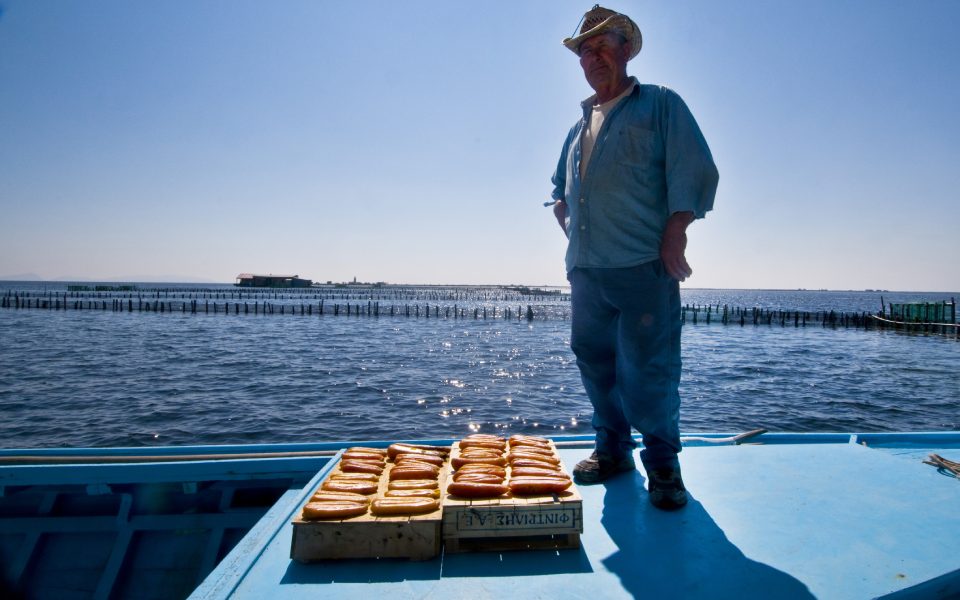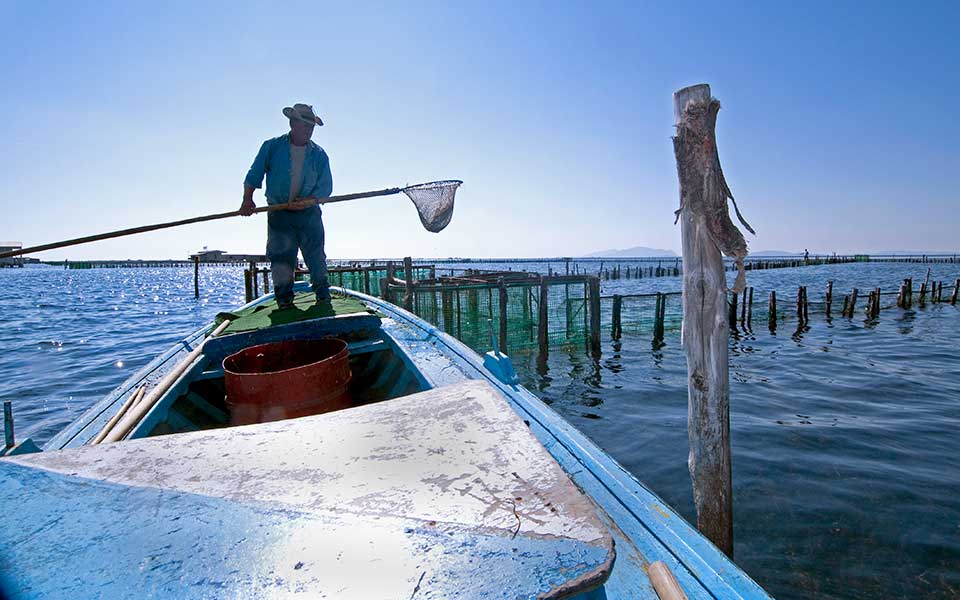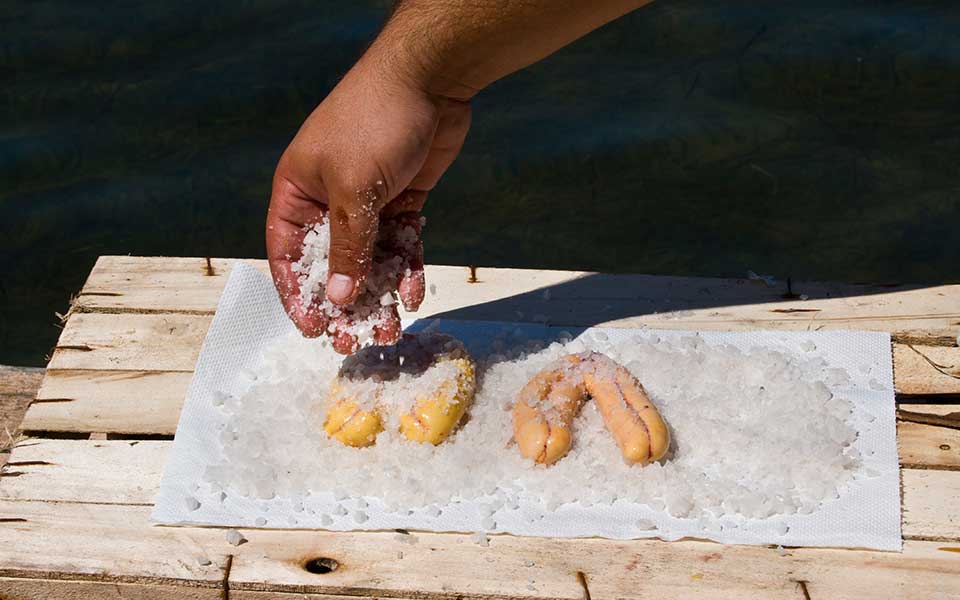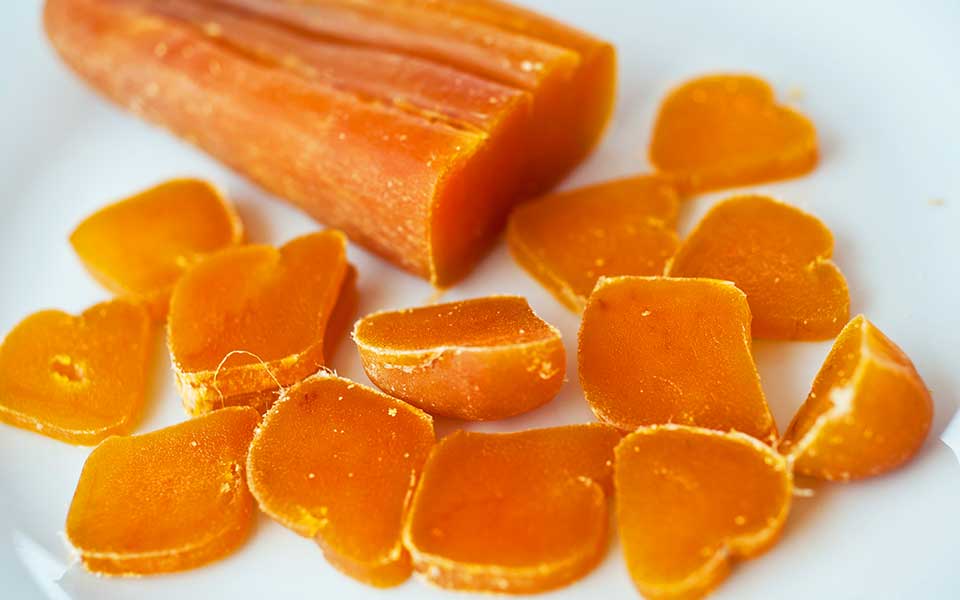Athens: 6 Insiders Reveal Their Top Picks
Six Athenians tell us about their...

© Clairy Moustafellou
It’s an August morning on the lagoon at Messolongi. Absolute peace reigns over the water. The only sound I hear comes from the engine of Vaggelis’ boat, which is taking us to the region’s natural fish farms, called the “ivaria.” This is where one of Greece’s finest food products comes from: known in the country as avgotaraho, but frequently referred to abroad simply as “Greek caviar”.
For the female flathead grey mullet, summer’s warm waters have created the ideal environment for reproduction, and the fishermen, who are casting their nets, know this.
They land the mullet and remove their egg masses with surgical precision, washing the clumps of roe, shaping them into bars and curing them with salt.

© Clairy Moustafellou

© Clairy Moustafellou

© Clairy Moustafellou
These bars will dry in the sun for at least three days and, when ready, will be brought to spotless workshops where waxing will take place: the roe will be dipped in pure wax to preserve its strong flavor, and the bars will be kept this way for a year.
Then, the roe is ready; this lagoon treasure will find its way onto kitchen countertops, an inspiring ingredient favored by elite chefs around the world. Alternatively, it will simply head straight for the table, to be cut in very thin slices and served as a delicious meze.
The fishermen of the lagoon prefer the second approach because that’s how they enjoy it; I discover this when we return from our boat ride to a fish banquet already laid out, last year’s roe on the plates and tsipouro in the glasses.
Six Athenians tell us about their...
In a summer of soaring prices,...